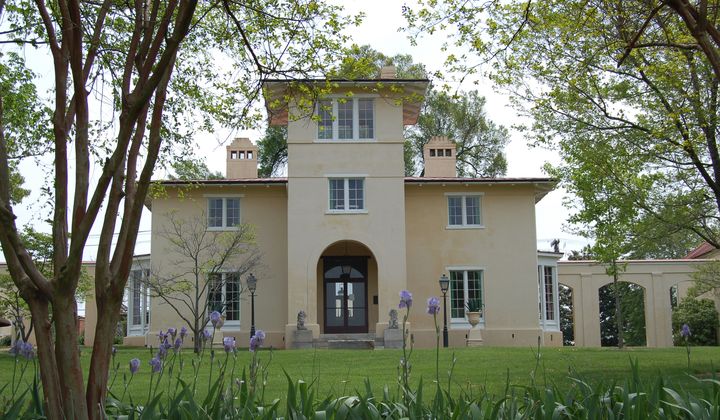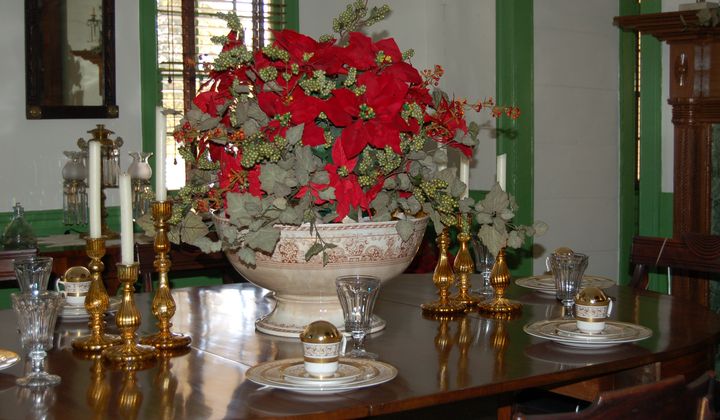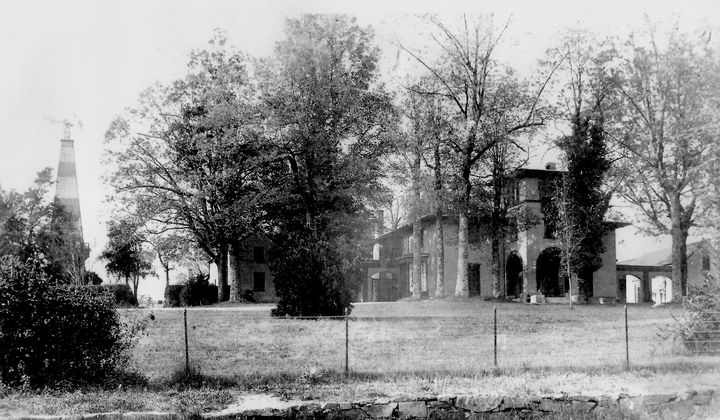Blandwood Mansion
447 West Washington Street, Greensboro, NC 27401 - United States
Blandwood, a National Historic Landmark, is one of America’s great historic homes. The beginning of Romanticism in North Carolina and the progressive ideals of Governor John Motley Morehead are illustrated through the architecture, landscape, and decorative arts of Blandwood. The house is a prototype for the Italianate style, one of America’s most popular architectural genres of the nineteenth century. The museum features a collection of period furnishings and art, including key pieces original to the house.
Constructed by Charles Bland on the crest of a hill on his wooded land, the earliest portions of the Bland’s Wood were completed around 1795. The two-story frame farmhouse was later acquired by the Morehead family and subsequently expanded according to plans drawn by nationally renowned architect Alexander Jackson Davis of New York. Davis designed additions in the Tuscan Villa (Italianate) style that featured a central three-story tower, stucco walls, and a low roofline within a tripartite plan with flanking dependencies. Completed in 1846, it is considered the oldest standing example of Italianate architecture in the United States. Although the house and its grounds were showcased in Andrew Jackson Downing’s Romantic Movement publication Architecture of Country Houses (1850), its occupants held substantial roles in the industrialization of the North Carolina in the nineteenth century.
Today, Blandwood is operated as a museum and provides visitors with a remarkably thorough ensemble of mid-19th-century architecture, decorative arts, landscape paintings, and portraiture, much original the house. Socially, the house museum examines the stories of the Morehead family and the people who were enslaved here, including Hannah Jones and Tinnan Morehead, whom the Moreheads were dependent on to maintain their lifestyle. Nominated to the National Register of Historic Places in 1970, Blandwood was recognized by the United States Secretary of the Interior as a National Historic Landmark in 1988 based on its architectural contributions to American history.
Exhibits
This temporary exhibit at Blandwood Museum, New Perspectives on Thomas Day – Pairing Furniture by North Carolina’s Free Black Master Craftsman with Contemporary Pieces from Governor Morehead’s Blandwood, features twelve pieces of Thomas Day crafted furniture to enliven narratives of race, gender, and class. The exhibition prompts dialogue about eminent free Black woodworker Thomas Day, known for his distinctive furniture and architectural woodwork. Displayed alongside contemporary furniture once owned by Governor John Motley Morehead, in period rooms where the Morehead family and the over 30 people they enslaved lived and worked, the exhibition will introduce new approaches to understanding the work of this master craftsman as a successful Black entrepreneur operating within elite white social circles.
A National Historic Landmark, Blandwood operates as a traditional house museum to interpret historical narratives related to North Carolina history, architecture, and the decorative arts. This unique exhibit works to expand the traditional narratives around race, gender, and class in mid-nineteenth century North Carolina.
Participation in Museum Day is open to any tax-exempt or governmental museum or cultural venue on a voluntary basis. Smithsonian magazine encourages museum visitation, but is not responsible for and does not endorse the content of the participating museums and cultural venues, and does not subsidize museums that participate.






